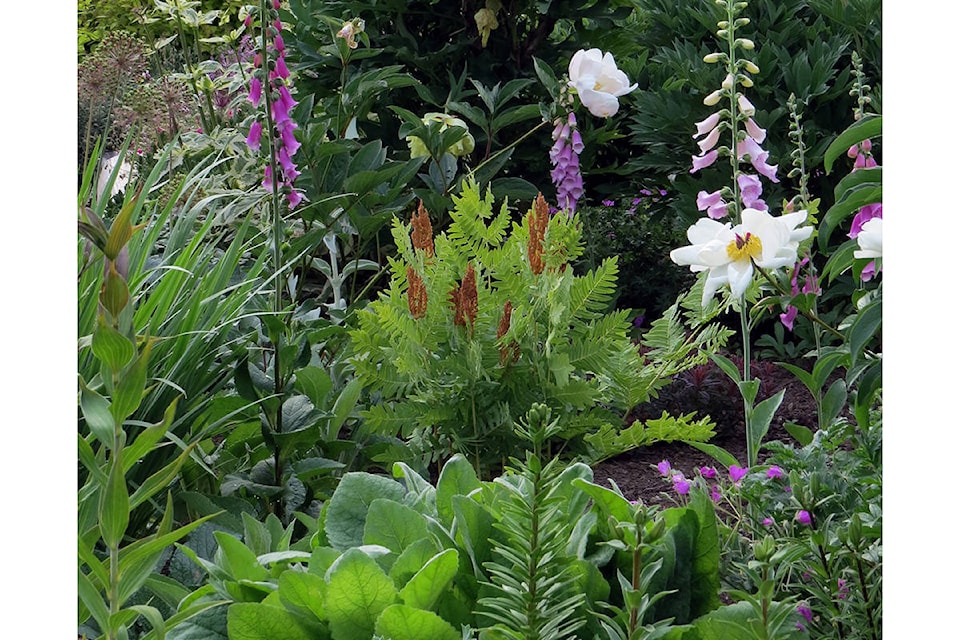Leslie Cox
Special to The Record
Last March I bit the bullet. I dug up my royal fern, Osmunda regalis, and insisted John find a spot for it in his garden. Slow growing as this fern can be, after a minimum of five years in my island bed it was definitely not showing off its full potential. And as I suspected, its root ball was richly anointed with feeder roots from the chestnut and maple trees.
Chalk up another failed plant trial for my garden. Drat.
I was ever hopeful when this fern was initially planted in my garden. Ferns are an understory species after all. But not this one so much. The royal fern is one of the few which can actually thrive in full sun and marshy areas along lakes and streams… although it is also found in drier, wooded areas as well.
You never know until you try, right?
Actually, it was John who insisted one birthday that I had to have a royal fern in my landscape. At the time, I did not disagree, as this fern really is a stellar specimen. At a height of up to five feet and a spread of nearly three feet, the fronds of this deciduous fern run the colour spectrum from pale green through shades of yellow, gold, brown and russet throughout the growing season. It does indeed live up to its “royal” epithet. In other people’s gardens. Not mine.
And now my plant is in the Duke’s garden.
John likely did not mean to rub salt on my wound by strategically placing the fern directly in my line of sight from the kitchen sink window. My thriving royal fern now enjoys pride of place; fronds proudly held erect to the sky. Drat again. Why could it not have behaved like that in my garden where I had also given it pride of place near the fountain in my island bed?
C’est la vie, as they say in gardening circles. And tit for tat.
John was recently bemoaning the unexpected loss of his gas plant, Dictamnus albus ‘Rosea,’ yet again as he gazed longingly at my specimen while we sipped tea on the front porch. Honestly, you would think he would be over his loss by now, considering it has been at least four years since his plant disappeared from his landscape with nary a trace.
True to past form, he ran over the facts:
• a long-lived plant
• was in original place as gas plant hates to be moved
• plenty of light and water
• no signs of pests or disease
Gone. Completely. Not even a seedling left in its place. The new growth just never re-appeared one spring. (Dictamnus is a herbaceous perennial. It dies back to the ground every winter.) A mystery to be sure, which has morphed into a cold case file. Will we ever solve it? Maybe one day.
There are lots of unexpected results in a garden setting. Some are due to weather like our poor ‘Collie Mullens’ hibiscus. Some succumb to insects or diseases like our snowball tree. And some I just put down to plain orneriness on the part of a plant species, like my royal fern’s aberration to tree roots.
That is gardening. You are guaranteed to see something every single day and most likely will also learn something new.
Hey, did you know ancestral ferns in the royal fern family were found in fossil beds which date back roughly 365 million years? Longevity must be one of the reasons why the Royal Horticultural Society bestowed its Award of Garden Merit on this plant species.
Leslie Cox co-owns Growing Concern Cottage Garden in Black Creek. Her website is at www.duchessofdirt.ca and her column appears every second Thursday in the Record throughout the spring and summer months.
